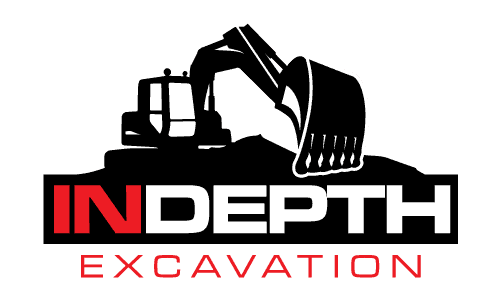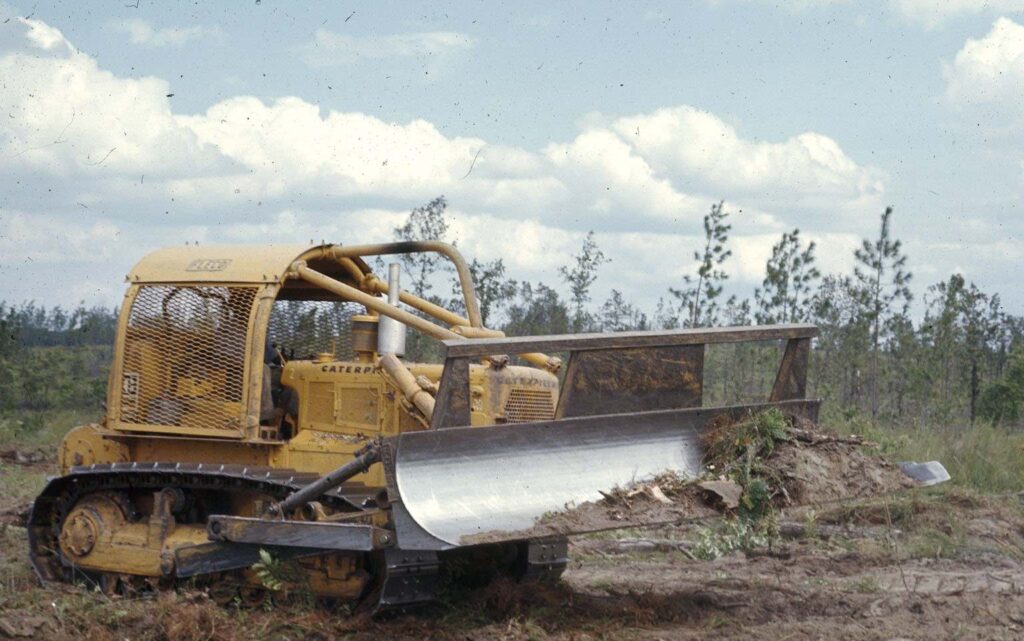Land clearing involves removing unwanted vegetation, debris, and obstacles from a specific area to prepare it for a desired purpose. This could include anything from building a residential or commercial property to creating a new garden or agricultural space.
Understanding land clearing costs can set you on the right path to transforming your vision into reality, especially here in Snohomish County. This informative guide by In-Depth Excavation, your local, trusted provider of land clearing services, will demystify the cost factors, breakdown the pricing structure, and answer your burning questions about land clearing projects.
Here’s a general idea of land clearing costs based on project type in Snohomish County:
- Small Residential Lot (Less than 1/4 acre): $1,500 – $3,000
- Medium Residential Lot (1/4 acre to 1 acre): $3,000 – $6,000
- Large Residential Lot (Over 1 acre): $6,000 – $10,000+
Factors for Calculating Land Clearing Costs in Snohomish County, Washington
The cost of land clearing in Snohomish County can vary significantly depending on several key factors. Understanding these factors empowers you to make informed decisions and estimate project costs more accurately. Here’s a deeper dive into how each aspect influences your land clearing expenditure:
- Size of the Land:
This is a straightforward factor. The larger the area requiring clearing, the more time and resources will be needed, directly impacting the cost. Clearing a small backyard will naturally cost less compared to clearing a multi-acre plot for agricultural purposes.
- Topography:
The lay of the land significantly affects the complexity of the clearing process. Flat land with easy access is generally less expensive to clear compared to land with:
- Slopes: Steeper slopes require specialized equipment and skilled operators to navigate safely and efficiently, increasing costs.
- Uneven terrain: Uneven terrain like hills, valleys, or rock outcroppings necessitates additional work like grading or terracing, adding to the overall cost.
- Vegetation Density:
The type and density of vegetation play a crucial role in determining the cost. Here’s how it breaks down:
- Sparse vegetation or small plants: Requires less labor and equipment, leading to lower costs.
- Dense brush or shrubs: Clearing dense brush requires more time and effort, potentially increasing costs.
- Mature trees: Large trees with extensive root systems require specialized equipment and expertise for removal, significantly impacting the cost. The number, size, and species of trees also play a role, with hardwood trees generally costing more to remove than softwood trees.
- Presence of Structures:
If your land has existing structures like sheds, fences, old buildings, or even swimming pools, their removal adds an additional layer of complexity and cost to the project. The size, type of materials used, and disposal requirements of these structures will influence the cost.
- Disposal of Debris:
The way cleared vegetation and debris are disposed of can impact the cost. Here are factors to consider:
- Type of debris: Different types of debris, like wood, brush, or concrete, may have varying disposal fees depending on local regulations and recycling options.
- Volume of debris: The larger the volume of debris, the higher the transportation and disposal costs.
- Hauling distance: The distance to the disposal facility can also influence the cost.
- Permits and Inspections:
Obtaining necessary permits and inspections from local authorities is crucial for any land-clearing project. The cost of permits and inspections varies depending on the project size, scope, and local regulations. Consulting with your local planning and development department before starting the project is crucial to understand the permitting process and associated fees.
Breaking Down the Cost of Land Clearing in Snohomish County
Understanding the various components that contribute to the total cost of land clearing empowers you to make informed budgeting decisions. Here’s a detailed breakdown of the key cost elements:
- Labor:
This includes the hourly rate of the crew members and equipment operators involved in the clearing process. It encompasses:
- Crew size: The size of the crew needed will depend on the project’s scale and complexity. Larger projects usually require more personnel.
- Experience level: More experienced crews might command a higher hourly rate due to their expertise and efficiency.
- Labor hours: The total number of hours the crew spends on the project directly impacts the labor cost. This is influenced by factors like project size, complexity, and encountered challenges.
- Equipment:
The type and size of machinery required for your project significantly influence the cost. Common equipment used in land clearing includes:
- Bulldozers: Effective for clearing large areas, pushing debris, and basic grading.
- Excavators: Versatile for digging, tree removal, loading debris, and various other tasks.
- Skid steers: Compact and maneuverable for clearing smaller areas, brush removal, and light-duty tasks.
- Chippers: Process wood debris into smaller pieces for easier hauling and disposal.
- Grinders: Grind stumps and roots underground, minimizing surface disruption.
The cost of equipment rental or use typically falls under one of two categories:
- Hourly rate: Some companies charge an hourly rate for equipment use, based on the type and size of the machinery.
- Daily rate: Others offer a daily rate for equipment rental, which might be more cost-effective for longer projects.
- Hauling:
The transportation and disposal of cleared vegetation and debris are crucial aspects of any land clearing project. Here’s what contributes to the hauling cost:
- Volume of debris: The larger the volume of debris, the more trucks or hauling trips required, impacting the cost.
- Hauling distance: The distance to the disposal facility directly affects the cost, as longer distances require more fuel and travel time.
- Disposal fees: Different types of debris, like wood, brush, or concrete, may have varying disposal fees based on local regulations and recycling options.
- Permits and Inspections:
Obtaining necessary permits and inspections from the local authorities adds to the overall project cost. The cost can vary depending on:
- Project size and scope: Larger or more complex projects typically require more permits and inspections, leading to higher costs.
- Local regulations: Different counties and municipalities might have varying fee structures for permits and inspections.
Costs per Type of Project
Here’s a general idea of land clearing costs based on project type in Snohomish County:
- Small Residential Lot (Less than 1/4 acre): $1,500 – $3,000
- Medium Residential Lot (1/4 acre to 1 acre): $3,000 – $6,000
- Large Residential Lot (Over 1 acre): $6,000 – $10,000+
Why Choose In-Depth Excavation for Your Land Clearing Needs?
At In-Depth Excavation, “Your Hole is Our Goal.” We are your trusted partner in Snohomish County for all your land clearing and excavation needs. With over 60 years of combined experience, we possess the expertise and equipment to handle projects of all sizes and complexities. We pride ourselves on:
- Professionalism and responsiveness: Our team is dedicated to providing exceptional customer service and clear communication throughout the project.
- Safety first: We prioritize safety for our crew and adhere to all industry standards and regulations.
- Efficiency and affordability: We work diligently to complete projects on time and within budget.
Ready to Take the First Step?
Contact In-Depth Excavation today for a free consultation and quote. Our experienced team will assess your land, discuss your project goals, and provide a personalized estimate tailored to your specific needs. Let us help you transform your vision into reality!
Contact In-Depth Excavation:
FAQs about Land Clearing Costs in Snohomish County
Unfortunately, there’s no single “average” cost for land clearing due to the various factors influencing the project price. However, the cost typically falls within the range of $1,500 – $10,000+, depending on the size of the land, topography, vegetation density, presence of structures, and other factors discussed in this guide.
The size of the land, topography, and vegetation density are generally the most significant cost drivers. Larger areas, steeper slopes, and denser vegetation all require more time, resources, and specialized equipment, leading to higher costs.
The best way to get an accurate estimate for your project is to consult with a reputable land clearing contractor like In-Depth Excavation. They can assess your land, understand your needs, and provide a personalized quote based on the specific factors affecting your project.
Permitting requirements vary depending on the project size, location, and local regulations. It’s crucial to consult with your local planning and development department to understand the specific permits and inspections needed for your project and any associated fees.
Land clearing companies typically handle debris disposal as part of their services. However, it’s essential to ensure they follow proper regulations and dispose of debris responsibly at designated facilities. You can also inquire about recycling options for specific materials like wood or brush.
Hiring professionals like In-Depth Excavation offers several benefits:
Expertise and experience: They possess the knowledge and experience to handle projects efficiently and safely.
Proper equipment and resources: They have access to the necessary equipment and resources to complete the project effectively.
Permits and compliance: They can handle the permitting process and ensure adherence to local regulations.
Time and cost savings: They can potentially save you time and money through their efficient work methods and established relationships with disposal facilities.



